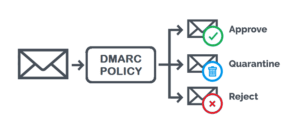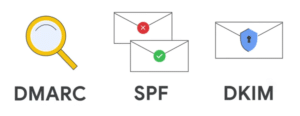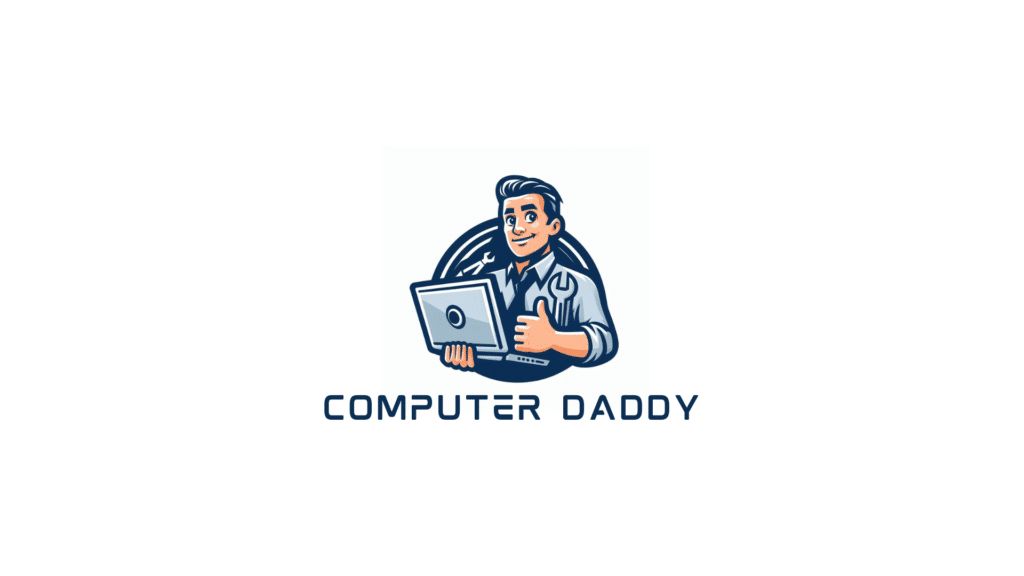DMARC Compliance in 2024 – Starting in 2024, many large companies we’ll require bulk senders to authenticate their emails, allowing for easy un-subscriptions and to stay under a reported spam threshold.
Domain-based Message Authentication, Reporting, and Conformance (DMARC) is essential to achieve this. Once enabled, it safeguards your business and email domain against email spoofing, impersonation, and phishing attacks. It’s a complex topic…
Google, Yahoo and Apple sender requirements in 2024
What are the new Gmail rules for 2024?
If you use Google Workspace or Gmail in your business, keep reading. As of early 2024 Google, Apple and Yahoo have announced sweeping changes to the email domain based message authentication system. In a nutshell, they are aiming to stop spammy emails and will need your domain to be fully compliant. If your not compliant, your emails will get sent to the spam folder of your customers.
Google’s DMARC 2024 announcement is here
Understanding DMARC Compliance
DMARC compliance pertains to emails that adhere to the requirements of the Domain-based Message Authentication, Reporting, and Conformance protocol. This protocol employs the Sender Policy Framework (SPF) and DomainKeys Identified Mail (DKIM), two established authentication standards, to assist mail servers in determining the legitimacy of an incoming message from a specific domain.
The Importance of DMARC in 2024
DMARC plays a crucial role in mitigating email-based cyber threats like phishing and spoofing attacks by verifying whether an email originates from a reliable or malicious source. Fraudsters often impersonate trusted executives, sending spoofed emails to employees asking for money transfers. These impersonation attacks aim to gather confidential information from business partners, employees, and clients, potentially leading to legal issues, brand reputation damage, and financial and data loss for the impersonated business.
Steps to Achieve DMARC Compliance
DMARC compliance is attained when an email is authenticated and aligns with the Sender Policy Framework (SPF) and/or DomainKeys Identified Mail (DKIM) email authentication standards. Skysnag simplifies this process by automating DMARC, SPF, and DKIM, eliminating the need for manual configuration.
Engage us to generate your DMARC record and implement it for you.
Implementing DMARC Records in 2024

MARC was designed to instruct a participating receiving email server on how to handle a message that fails both SPF and DKIM validation. In other words, it determines the action to take if a message falsely claims to be from you. If SPF, DKIM, and email validation are unfamiliar concepts, please contact us to discuss this with you.
Implementing DMARC for your email systems is an effective strategy to prevent potential spoofing or tarnishing of your reputation as a trustworthy email sender. If you’ve encountered phishing issues or if you run a business, DMARC implementation is critical. Major inbox providers such as Google have requirements necessitating DMARC for larger senders.
Interpreting DMARC Reports
DMARC aggregate and forensic reports are machine-readable and can be challenging for humans to understand. A DMARC report monitoring service is necessary to collect the reports and present the information in a user-friendly manner that offers actionable insights. Valimail is one such example. We can set up a free Valimail account, then monitor the reports for you and make adjustments to the DMARC policies as needed until you achieve DMARC Compliance in 2024.
Five Phases of DMARC Implementation:
- Set up reverse DNS to deploy DKIM & SPF.
- Ensure proper DKIM, SPF, and DMARC signing for your authenticated domain. This step involves creating multiple DNS records with your hosting or DNS provider which we can handle for you.
- Publish a DMARC record with your DNS registrar and monitor the results.
- Analyse the feedback received and adjust your mail streams accordingly.
- Escalate your DMARC policy tags from p=none to p=quarantine to p=reject as you gain confidence in your setup.
What are DMARC, DKIM, and SPF?
DMARC, DKIM, and SPF are three email authentication methods. Together, they help prevent unauthorised parties from sending emails from your domain that they do not own. Yes, spammers can send emails as if they were you…
DKIM and SPF are like a license — they help demonstrate legitimacy.
DMARC instructs email servers what to do when your DKIM or SPF rules fail. Delivering the emails anyway, marking them as spam or deleting the emails altogether.

How does DKIM work?
DomainKeys Identified Mail (DKIM) enables domain owners to automatically “approve” or sign emails originating from their domain. The DKIM digital signature is a verification tool that uses cryptography to verify the sender of the email.
Contact Computer Daddy about setting up your DMARC records for compliance in 2024 or exploring some of our other services & Melbourne computer repairs.


